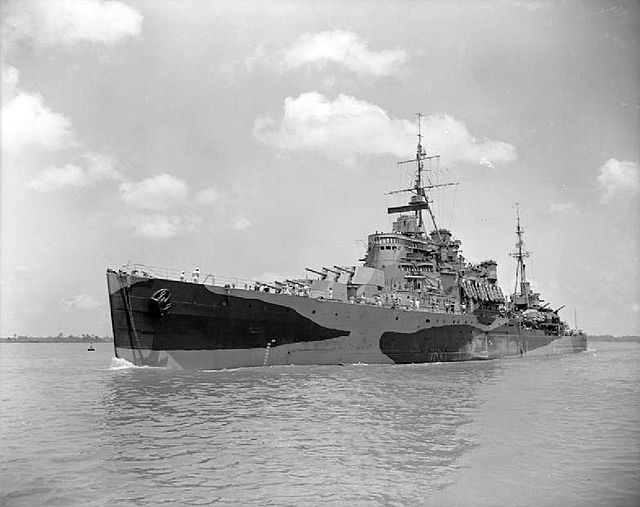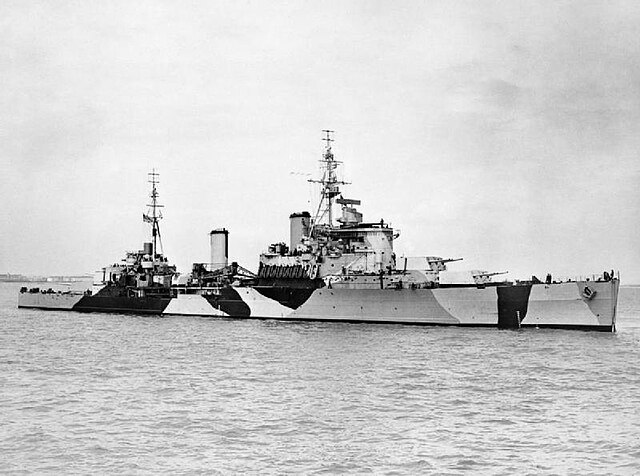HMS Fiji was the lead ship of her class of 11 light cruisers built for the Royal Navy shortly before the Second World War. Completed in mid-1940, she was initially assigned to the Home Fleet and was detached to escort a force tasked to force French West Africa to join the Free French. The ship was torpedoed en route and required six months to be repaired. Fiji was then assigned to Force H where she helped to escort convoys to Malta. The ship was transferred to the Mediterranean Fleet in early May 1941. After the Germans invaded Crete a few weeks later, she was sunk by German aircraft on 22 May after having fired off all of her anti-aircraft ammunition.
Fiji in 1940
The interior of a 6-inch triple Mark XXIII mounting on board sister ship Jamaica. The crew is wearing anti-flash gear and the crewman in the foreground has over his shoulder a 30-pound (14 kg) cordite propellant charge.
Fiji under heavy air attack (Painting by Lieutenant Commander Rowland Langmaid RN)
The Fiji-class cruisers were a class of eleven light cruisers of the Royal Navy that saw extensive service throughout the Second World War. Each ship of the class was named after a Crown colony or other constituent territory of the British Commonwealth and Empire. The class was also known as the Colony class, or Crown Colony class. Developed as more compact versions of the preceding Town-class cruisers, the last three were built to a slightly modified design and were sometimes also called the Ceylon class.
Nigeria in 1943
HMS Jamaica





